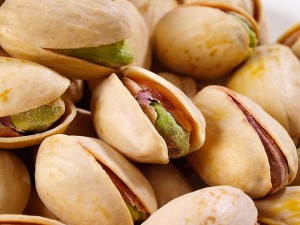(NaturalHealth365) Named after the Greek pistákion, pistachios (aka “green nut”) are some of the most nutrient-dense nuts around – and they also happen to be a healthy source of protein, antioxidants and fiber.
That said, pistachios – as well as other nuts and seeds – provide a great source of healthy fats. In fact, a diet rich in healthy fat – including oleic acid and linoleic acid – has been shown to lower inflammation and reduce your risk of heart disease, among other benefits.
The good news? Pistachios are loaded with oleic and linoleic acid – plus several other compounds proven to be a serious boost for your well-being.
Cracking the code: 7 science-backed health benefits of pistachios
Cultivated primarily in the Mediterranean region, pistachios have their earliest historical references dating as far back as 7,000 B.C. in what is now modern-day Turkey. Legend has it that Queen of Sheba confiscated all of the pistachios from Assyria, an ancient Mesopotamian kingdom, and declared them an exclusive royal delicacy…Clearly she was on to something.
We have talked before about how beneficial tree nuts are for your health. And we can think of at least 7 reasons why you’ll want to work the “green nut” into your nutritional rotation:
- Pistachios are loaded with antioxidants – like phytosterols, xanthanophyll carotenoids, and γ-tocopherol (a form of Vitamin E) – which are anticancer, anti-aging, and anti-inflammatory. In addition, these nuts have plenty of other vitamins and minerals, too, including potassium, copper, vitamin B6, and manganese.
- They improve blood pressure by enhancing the function of endothelium (a thin membrane lining the inside of your heart and blood vessels).
- With nearly 3 grams of fiber, 6 grams of protein, and 13 grams of fat per serving, pistachios help you feel fuller longer – making them a great choice if you’re trying to lose weight.
- They improve blood lipid profiles – specifically by increasing “healthy” HDL cholesterol, lowering “lousy” LDL cholesterol, and improving the HDL to total cholesterol ratio (the lower the better).
- They also improve blood glucose levels, and may reduce your risk of developing type 2 diabetes.
- They’re super gut healthy and can increase the number of bacteria which produce the anti-inflammatory fatty acid called butyrate (which protects against everything from obesity to autoimmune disorders).
- They protect against ocular diseases like macular degeneration and cataracts, largely thanks to their high concentration of eye-healthy lutein and zeaxanthin.
How many pistachios do we need to eat – per day – to be healthy? One serving of pistachios is 49 kernels – about one ounce of unshelled nuts. Now, if you have the type of self-control to watch your portion sizes, you’re welcome to grab a handful as a snack.
But if you don’t trust yourself around an open bag of pistachios – or if you’d prefer to eat them in a more creative way – check out some of these ideas: ~ Crush them up and use them as a topping on your favorite meat or fish meal.
~ Mix them into salads. ~ Sprinkle them over homemade soup, rice, or any kind of veggie side dish. ~ Try a healthy dessert made of freshly cut mango, pistachios, and ground cinnamon and ginger.
As for whether you get the shelled or unshelled kind, it’s really just up to your patience. Some people love relaxing with a bowl of pistachios to shell, while others find it more annoying than anything. No matter which option you prefer, just watch your intake.








